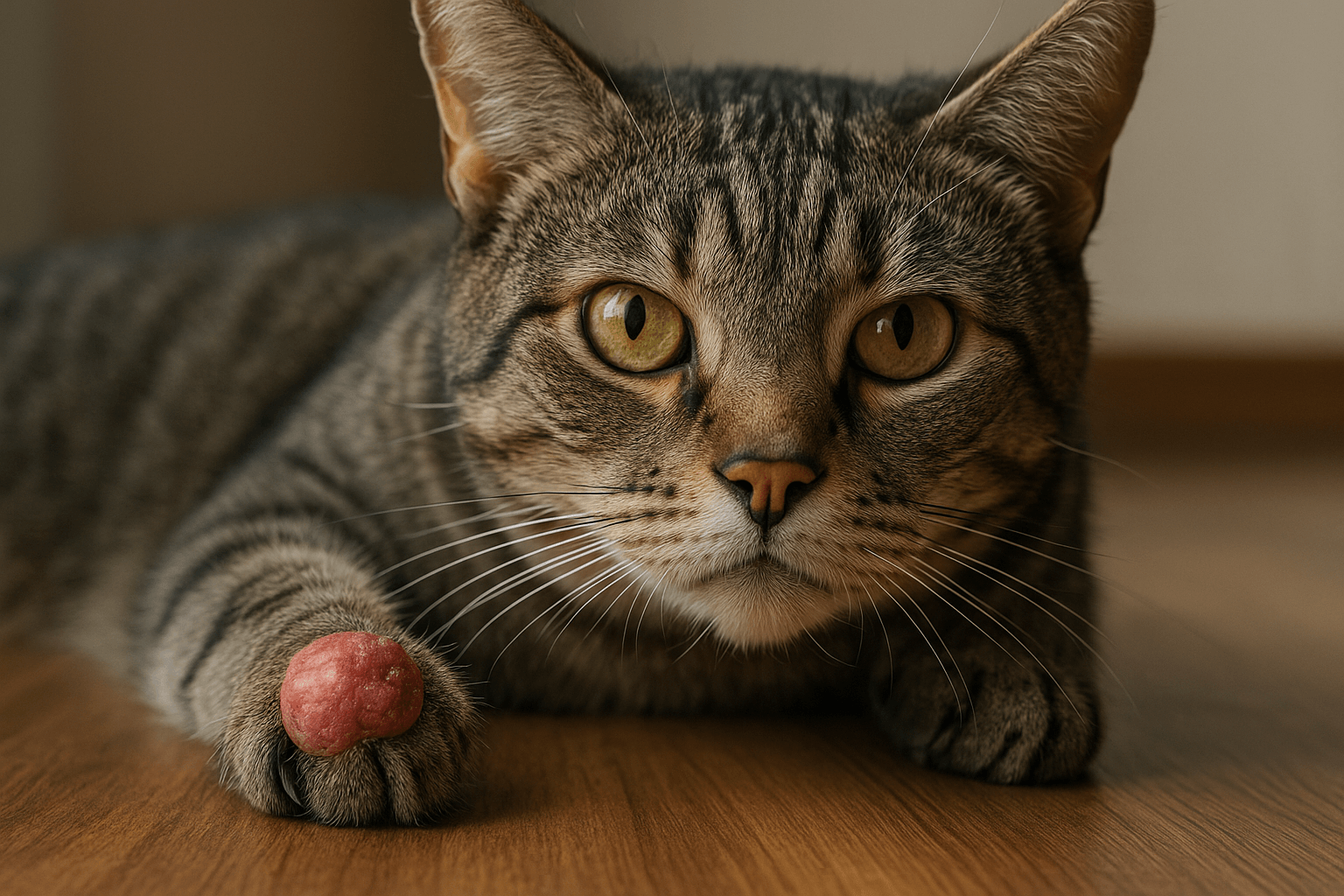Flea Medicine Not Working on Cat? Here’s What You Need to Know
Dealing with fleas is frustrating, but it can be downright disheartening when the flea medicine you’ve chosen doesn’t seem to work on your cat. Whether it’s a topical treatment, oral medication, or collar, there are several reasons why flea control products might fail to deliver the expected results. Fleas are resilient pests, and without proper management, they can quickly multiply and make life miserable for both you and your feline friend. In this guide, we’ll explore why flea medicine may not be working, how to troubleshoot the problem, and what steps you can take to ensure your cat stays flea-free. With the right approach, you can regain control and restore peace to your home.
Common Reasons Why Flea Medicine May Fail
If your flea medicine isn’t working as intended, don’t panic—there are several potential explanations. Understanding these reasons can help you address the issue effectively.
Improper Application : Topical treatments need to be applied directly to the skin, not just the fur. Missing the skin can reduce effectiveness.
Expired Product : Using expired flea medicine may render it ineffective, as active ingredients lose potency over time.
Incorrect Dosage : Underdosing or using a product designed for smaller animals can leave your cat vulnerable to fleas.
Resistance to Active Ingredients : Some fleas have developed resistance to certain chemicals commonly found in flea medications.
Environmental Infestation : Flea medicine targets adult fleas on your cat, but eggs, larvae, and pupae in your home can reinfest your pet.
Identifying the root cause of the problem is the first step toward finding a solution that works for your cat.
Signs Your Flea Medicine Isn’t Working
It’s important to recognize early signs that your flea medicine isn’t doing its job. These indicators can help you act quickly to prevent further infestations.
Persistent Scratching : If your cat continues to scratch excessively despite treatment, fleas may still be present.
Visible Fleas or Flea Dirt : Check your cat’s fur for live fleas or flea dirt (black specks resembling pepper).
Redness or Irritation : Flea bites can cause red, irritated skin, even if you don’t see the fleas themselves.
Behavioral Changes : Cats with fleas may become restless, agitated, or lethargic due to discomfort.
Reinfestation After Treatment : If fleas return shortly after applying medication, it may indicate incomplete eradication.
Recognizing these signs allows you to reassess your flea control strategy and take corrective action promptly.
Check this guide 👉How to Put Flea Medicine on a Cat: Best 7 Expert Tips!
Check this guide 👉Dog Fleas vs Cat Fleas: Best 7 Health Tips!
Check this guide 👉The Ultimate Guide to Cat Flea Baths: Best 7 Health Tips!

Types of Flea Treatments | Pros and Cons |
|---|---|
Topical Solutions | Easy to apply; targets adult fleas but requires proper application. |
Oral Medications | Fast-acting; effective against adult fleas but may not address environmental issues. |
Flea Collars | Long-lasting; provides continuous protection but may irritate sensitive cats. |
Flea Shampoos | Immediate relief; removes fleas during bathing but offers no long-term protection. |
Environmental Sprays | Kills fleas in the home; complements pet treatments but doesn’t target fleas on the cat directly. |
Steps to Take When Flea Medicine Fails
If your flea medicine isn’t working, don’t give up—there are actionable steps you can take to resolve the issue.
Double-Check Application Instructions : Review the product label to ensure you’re using the treatment correctly.
Switch Products : Try a different brand or type of flea medication with alternative active ingredients.
Treat Your Home : Use flea sprays, powders, or foggers to eliminate fleas from carpets, furniture, and bedding.
Wash Bedding Regularly : Launder your cat’s bedding and any fabrics they come into contact with in hot water.
Consult Your Veterinarian : A vet can recommend prescription-strength treatments or identify underlying health issues contributing to the problem.
By addressing both your cat and their environment, you can break the flea lifecycle and achieve lasting results.
Tips for Preventing Flea Infestations in the Future
Preventing fleas is always easier than dealing with an infestation. Here are some proactive measures to keep your cat flea-free.
Use Preventive Treatments Year-Round : Even during colder months, fleas can survive indoors, so consistent prevention is key.
Groom Your Cat Regularly : Brushing your cat’s fur helps you spot fleas early and keeps their coat healthy.
Vacuum Frequently : Vacuuming carpets, rugs, and upholstery removes flea eggs and larvae from your home.
Limit Outdoor Exposure : Keep your cat indoors to reduce their risk of encountering fleas outdoors.
Monitor Other Pets : Ensure all pets in your household are treated consistently to prevent cross-infestations.
Taking these preventive steps can save you time, money, and stress in the long run.
Subtle Clues That Indicate a Flea Problem
Sometimes fleas aren’t immediately visible, but there are other signs that can help you identify an infestation. Being observant can prevent the problem from worsening.
Excessive Grooming : Cats often groom themselves more than usual to alleviate flea bites, which can lead to hair loss or bald patches.
Tapeworms : Fleas are carriers of tapeworm eggs, so if your cat has tapeworms, it’s likely they also have fleas.
Restlessness or Irritability : Flea bites can make your cat unusually fidgety or agitated.
Pale Gums : In severe cases, fleas can cause anemia in cats, leading to pale gums and lethargy.
Hot Spots : Constant scratching or biting can result in inflamed, irritated areas on your cat’s skin.
By recognizing these subtle signs, you can catch a flea problem early and take action before it escalates.
Avoid These Pitfalls for More Effective Flea Control
Treating fleas can be tricky, and even well-meaning pet owners sometimes make mistakes that hinder progress. Here are some common errors to avoid:
Skipping Environmental Treatment : Focusing only on your cat while ignoring your home allows fleas to thrive and reinfest your pet.
Using Over-the-Counter Remedies Incorrectly : Misapplying topical treatments or using them too frequently can reduce their effectiveness.
Not Following Instructions : Deviating from the product’s guidelines can lead to improper dosing or application.
Assuming One Treatment is Enough : Flea treatments often require multiple applications to break the flea lifecycle completely.
Neglecting Regular Check-Ups : Skipping vet visits means missing out on professional advice or stronger treatments when needed.
Avoiding these mistakes ensures your flea control efforts are as effective as possible.
Boosting Flea Prevention with Natural Solutions
While veterinary-approved treatments are essential, natural remedies can complement your flea control strategy. These methods are safe and easy to incorporate into your routine.
Apple Cider Vinegar Spray : Mix equal parts water and apple cider vinegar to create a spray that repels fleas (avoid eyes and ears).
Diatomaceous Earth : Sprinkle food-grade diatomaceous earth on carpets and bedding to dehydrate fleas and larvae.
Herbal Flea Collars : Some natural collars infused with essential oils like lavender or cedarwood can deter fleas.
Brewer’s Yeast Supplements : Adding brewer’s yeast to your cat’s food may make their blood less appealing to fleas.
Rosemary Baths : A gentle rinse with diluted rosemary water can soothe your cat’s skin and repel fleas naturally.
While these solutions can help, they should never replace vet-recommended treatments, especially in severe infestations.
Frequently Asked Questions About Flea Medicine Not Working on Cats
How long does it take for flea medicine to work?
Most treatments start killing fleas within 24-48 hours, but complete eradication may take a few weeks.
Can I use dog flea medicine on my cat?
No, many dog flea medications contain ingredients toxic to cats and should never be used interchangeably.
Why do fleas keep coming back after treatment?
Fleas may reappear if the environment isn’t treated, as eggs and larvae can survive and mature.
Are natural flea remedies effective?
Natural remedies like essential oils or diatomaceous earth may help but often lack the potency of veterinary-approved treatments.
Should I bathe my cat before applying flea medicine?
It depends on the product. Some require a clean coat, while others advise against bathing beforehand. Always check the label.
Stay Persistent and Proactive Against Fleas
When flea medicine isn’t working on your cat, it’s easy to feel discouraged—but don’t lose hope. By identifying the cause of the problem, treating both your cat and their environment, and taking preventive measures, you can overcome this challenge. Remember, consistency is key when it comes to flea control. Work closely with your veterinarian to find the best solutions for your cat’s unique needs, and don’t hesitate to try new approaches until you find one that works. With patience and determination, you can keep your cat happy, healthy, and flea-free.
Cuterebra Larvae in Cats: Best 7 Expert Tips! – Expert advice on signs, treatment & prevention of this rare but serious feline parasitic infestation.
Cuterebra Larvae in Dogs: Best 7 Expert Tips! – Expert advice on signs, treatment & prevention of this rare but serious parasitic infestation.
Cat Tumor on Paw: Best 7 Expert Tips! – Expert advice on signs, diagnosis, treatment & care for feline paw tumors.
Panacur Side Effects in Dogs: Best 7 Expert Tips! – Safe usage, common reactions & when to call the vet.





